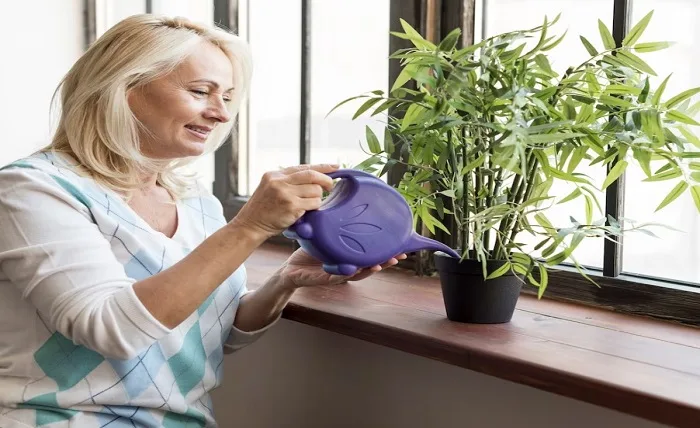As individuals grow older, there comes a time when they have to make decisions regarding their living arrangements. While some may choose to move into retirement communities or assisted living facilities, others prefer to age in place – staying in their own homes and communities as they grow older. This option offers a sense of comfort and familiarity that many seniors cherish. Many individuals remain with their low fee super fund‘ default account, believing it aligns with their risk tolerance, or due to uncertainty.
What is aging in place?
Aging in place refers to the concept of seniors choosing to remain in their own homes instead of moving to a different location as they age. It is a proactive approach that involves making modifications to the home environment to accommodate the changing needs and limitations that come with aging. These modifications may include installing grab bars in bathrooms, widening doorways for wheelchair accessibility, or adding ramps for easier entry and exit.
The benefits of growing older at home
There are several benefits to aging in place. Firstly, it allows seniors to maintain a sense of independence and control over their own lives. Being in familiar surroundings can provide a sense of comfort and security, reducing the feelings of loneliness and isolation that can sometimes accompany the aging process.
Secondly, aging in place promotes emotional well-being. Being surrounded by treasured possessions, memories, and the support of neighbors and friends can contribute to a higher quality of life and overall happiness.
Finally, there are financial considerations. Moving to a retirement community or assisted living facility can be expensive, and aging in place can help seniors save money in the long run.
By choosing to age in place, seniors can continue to enjoy the comforts of home while maintaining their independence and overall well-being.
Creating a Safe and Accessible Home Environment
Aging in place, or growing older at home, is a desire shared by many seniors. To ensure a comfortable and independent lifestyle, making necessary adaptations to the home is crucial. Here are some tips to create a safe and accessible home environment for aging individuals.
Adapting the home for mobility and accessibility
- Widening doorways: Make sure doorways are wide enough to accommodate wheelchairs or walkers.
- Installing ramps: If there are steps leading to the entrance, consider installing ramps for easier access.
- Lowering countertops and cabinets: Modify kitchen and bathroom counters and cabinets to a suitable height for individuals with limited mobility.
Installing safety features and equipment
- Grab bars: Install grab bars in bathrooms and near stairs to provide stability and support.
- Handrails: Add handrails on staircases to prevent falls and help with balance.
- Non-slip flooring: Replace slippery flooring with non-slip alternatives to reduce the risk of falls.
Eliminating hazards and reducing fall risks
- Remove clutter: Clear walkways and remove any unnecessary items that may cause tripping hazards.
- Good lighting: Ensure proper lighting throughout the house to improve visibility and prevent accidents.
- Secure rugs and carpets: Use adhesive or non-slip pads to prevent rugs and carpets from shifting or curling up.
By implementing these changes, seniors can feel more confident and secure in their own homes as they age. It allows them to maintain their independence and enjoy a higher quality of life.
Maintaining Physical and Mental Health
Aging in place, or growing older at home, is a goal for many individuals as they age. To ensure a fulfilling and happy life at home, it is essential to focus on maintaining both physical and mental health.
Exercise and staying active as you age
Regular exercise is incredibly beneficial for older adults. It helps maintain overall physical health, improves mobility and balance, and reduces the risk of chronic diseases. Engaging in activities like walking, swimming, or yoga can be a great way to stay active and keep your body strong. It is important to consult with a healthcare professional before starting any exercise regimen.
Managing chronic conditions and medication
Many older adults live with chronic conditions such as diabetes, heart disease, or arthritis. It is crucial to manage these conditions effectively to maintain a high quality of life. This includes following prescribed medication regimens, attending regular check-ups, and making necessary lifestyle changes.
Mental stimulation and social engagement
Mental stimulation and social engagement are vital for overall well-being. Engaging in activities that challenge the mind, such as puzzles, reading, or learning a new skill, can help keep the brain active and sharp. Additionally, staying socially connected with friends, family, and community groups helps combat loneliness and promotes a sense of belonging.
By prioritizing physical and mental health through exercise, managing chronic conditions, and engaging in stimulating activities and social connections, individuals can successfully age in place and enjoy a fulfilling life at home.
Support Systems and Resources
Regardless of age, everyone wants to live in a comfortable and familiar environment. For many seniors, this means aging in place – staying in their own homes as they grow older. However, it’s important to ensure that you have the necessary support systems and resources in place to maintain a safe and fulfilling life at home.
Hiring caregivers or home health aides
One of the key aspects of aging in place is having assistance available when needed. Hiring caregivers or home health aides can provide the necessary support to help seniors with daily activities and medical care. These professionals can assist with tasks such as bathing, dressing, meal preparation, medication management, and companionship.
When hiring caregivers or home health aides, it’s important to consider their qualifications, experience, and compatibility with the senior’s needs and preferences. Conduct thorough interviews, check references, and consider utilizing an agency that performs background checks and ensures proper training for their staff.
It’s also important to establish clear communication and expectations with the hired caregivers or aides. Regularly assess their performance and make sure they are providing the necessary care and support needed to maintain the senior’s well-being and independence.
Remember, aging in place can be a rewarding experience with the right support systems and resources in place. By hiring caregivers or home health aides, seniors in Charleston SC can receive the assistance they need while still enjoying the comfort and familiarity of their own home care Charleston SC.
Conclusion
Aging in place is a lifestyle choice that offers independence, familiarity, and comfort as individuals grow older. With the right preparations and adjustments, it is possible to create a safe and supportive environment at home. Here are some key takeaways to consider:
Encouragement for embracing this lifestyle choice
- Plan ahead: Start preparing your home early by making necessary modifications to accommodate aging needs. This includes installing grab bars, improving lighting, and creating clear pathways.
- Stay connected: Social interaction is crucial for mental and emotional well-being. Maintain relationships with family, friends, and neighbors. Consider joining local senior centers or clubs to engage in activities and meet new people.
- Adopt healthy habits: Eating a balanced diet, staying physically active, and regularly visiting healthcare professionals are important for overall well-being. Make sure your home is equipped with appropriate assistive devices, such as mobility aids or medical alert systems.
- Embrace technology: Technology can enhance safety and convenience. Utilize smart home devices, such as automated lighting or doorbell cameras, to monitor your surroundings and control your environment.
- Seek support: Don’t hesitate to reach out for support when needed. There are a variety of resources available, including home healthcare services, meal delivery options, and caregiver support groups.
Remember, aging in place is about creating an environment that allows you to maintain your independence and quality of life. With careful planning and a positive mindset, you can continue to thrive in the comfort of your own home.



